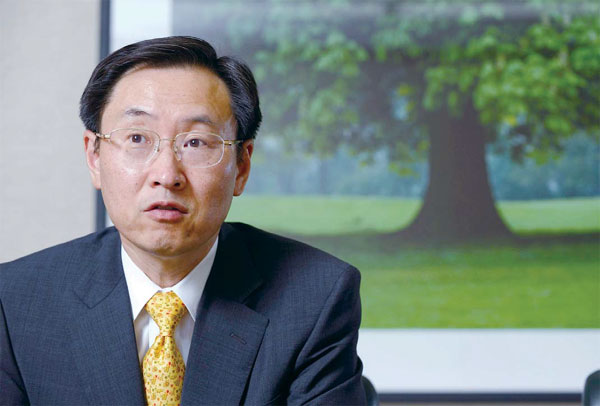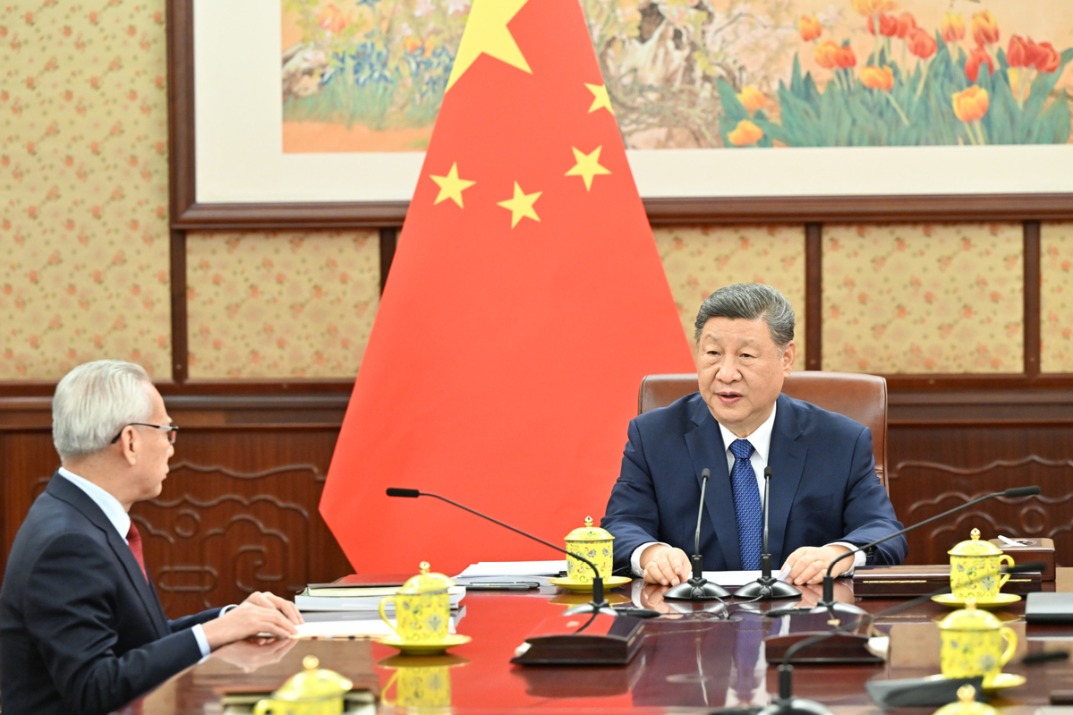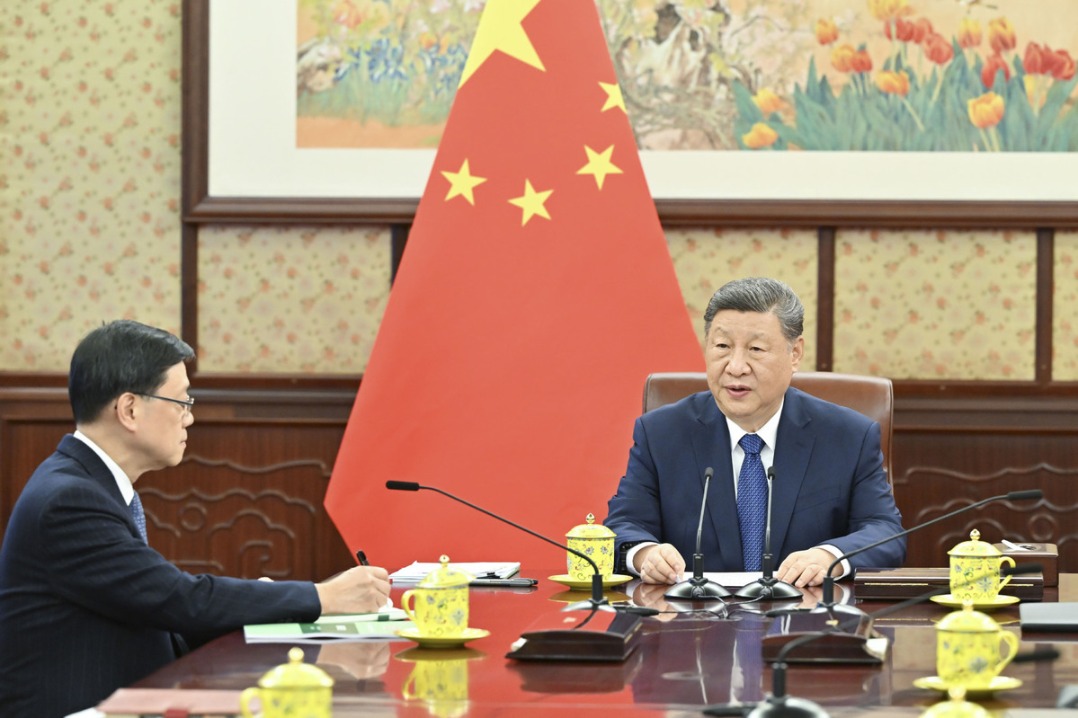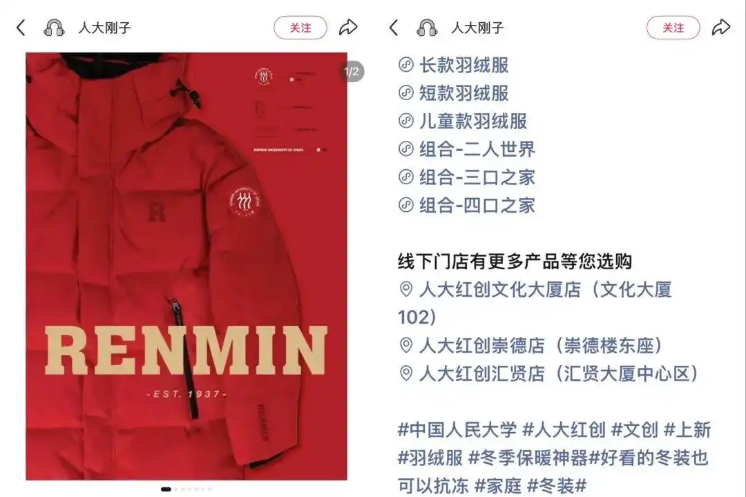Printer giant is image of success

Innovation, which kept Epson atop the inkjet market, will serve it well in the future as it explores areas like robotics, CEO says
Innovation is the driving force of an enterprise, which is true for Minoru Usui, president and CEO of Japanese electronics company Seiko Epson Corp, commonly known as Epson.
Usui, who as a young engineer led the team that developed the company's core technology - called micro piezo technology - says innovation is of great importance to companies, which need to constantly innovate to create new products to help improve society.
| Minoru Usui, president and CEO of Seiko Epson Corp. Provided to China Daily |
Since Usui became the CEO of Epson in 2008, he has adjusted the original business structure. After analyzing the strengths of the company, he decided to vigorously develop its inkjet printing instead of the laser printing business.
Founded in 1942, Epson had humble beginnings, starting with making watches.
The company, now one of the world's biggest manufacturers of computer printers and information and imaging-related equipment, announced its Epson 25 Corporate Vision (2016-25) recently, setting out the direction it will take over the next decade.
Epson plans to step up the pace of its technological innovation, not only in traditional fields such as printers and projection equipment, but also by expanding its robotics and wearable devices activities.
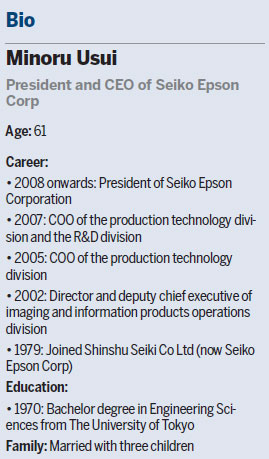
Usui says his confidence in China was based on strong sales of its Epson products, including inkjet printers and projectors, which have enjoyed steady growth.
Faced with a continuing labor shortage and more elaborate production requirements, Usui says more robots are needed to make manufacturing processes smarter and contribute to greater productivity.
He tells China Daily that the Made in China 2025 action plan will provide a number of opportunities for Epson, a technology-driven company.
The following are edited excerpts from the interview.
Q: How do you see your company's prospects in China in the context of the current economic situation?
A: China is changing dramatically. It has been growing for years and is now very stable. We are focusing on two categories: production and sales in China. The sales activity is very positive for Epson, which means we have a big opportunity for our new products - for example, inkjet printers and projectors - and we hold a dominant position in these areas, so there is no problem for us generally.
However, the productivity problem is very severe in China as labor costs are dramatically increasing, and we can't sustain labor quality and quantity as our employees are leaving us.
What is the biggest opportunity and challenge for doing businesses in China? Why?
We are now changing dramatically, not only in the consumer sector, but also in the business and industry sectors, which is the same situation as in China.
We are concentrating on consumer products or small-business products, and by using our micro piezo technology, we are now involved in high-performance business inkjet printers, an alternative to the traditional laser printer.
To achieve success in business, we must be a customer-oriented company, which is the biggest opportunity, but also the biggest challenge for us. We must establish collaborations with local Chinese companies to develop both software and hardware solutions.
With the paperless office concept prevailing, the traditional printer sector is deemed a sunset industry. What is the future for Epson?
The reason people wish for the paperless office lies in the fact that it has less of an impact on the environment, the cost is relatively low, and electronic documents are easier to manage.
We have made efforts in two areas. On one hand, we hope to promote inkjet printers, which are more environmentally friendly, instead of laser printers.
On the other hand, because the use of paper can deplete forest resources, we have developed our PaperLab technology, which takes used paper and creates fresh new sheets, to form a paper-making ecosystem in offices. And this is our future direction.
As to the printing technology, we don't only print on paper, but also on fabrics and other multiple media. We hope to provide our inkjet technology for the printing process, which is digital and causes less impact on the environment.
As the founder of the company's core technology of micro piezo, how do you map out Epson's strategy with that strong technical background? What kind of change did you bring after becoming president in 2008?
We were facing tough times. First, we had the LCD display business, which was very uncompetitive and the business was shrinking. Moreover, our printer business also met with severe challenges in emerging countries.
Meanwhile, we were only making consumer printers, so the overall situation was not good. The financial crisis in 2008 made the Japanese yen appreciate very rapidly.
So we analyzed what Epson's strengths were and made an adjustment to the business structure and developed some new business models. Because we are good at technology, our technology shouldn't lag behind our competitors. But we noticed that our traditional technology, like the LCD screens, had lost competitiveness, so we transferred the business. We also reduced our semiconductor business.
Meanwhile, we considered areas where we could expand our business. After analyzing our strengths, we focused on inkjet printing technology and projector equipment.
We originally had a laser printer, but it had no competitive advantage in the market, so we abandoned this field in many countries and concentrated on inkjet printing, improving the technology to adapt to the office environment.
Generally speaking, we stand on our own merits, expanding our production line and the competitiveness of our products, and really analyzing the demands of consumers.
What is the role of innovation at Epson and how do you keep that innovation going?
If you take the innovation away from Epson, there is no meaning for the company. Innovation doesn't mean defeating other companies or winning in competition with our rivals, but providing customers with our products and services.
One characteristic of Epson's employees or engineers is that they focus very much on one thing and are diligent in achieving their goals. As the CEO of Epson, my job is to create value for customers, facilitate the whole corporate culture of innovation and push everybody in that direction.
How do you motivate your international team?
The role of our headquarters in Japan is to create the core of technologies, but we don't just create products in Japan and send them to other countries.
What is really important to Epson is to understand each of the customers in each single country. The local staff must be involved in creating business models and products that suit their individual area. I think China is a very good example for that.
So we want to have a maximum input from all the countries where we do business. That enables us to create products to suit customers in each market.
Epson has a lot of employees around the world and what is important is to create ways of sharing information between the countries, so everybody can access it and people from different countries can come together to discuss the direction Epson should go in.
fanfeifei@chinadaily.com.cn
(China Daily Africa Weekly 08/05/2016 page31)
Today's Top News
- Foreign ministers of China, Egypt call for Gaza progress
- Shield machine achieves Yangtze tunnel milestone
- Expanding domestic demand a strategic move to sustain high-quality development
- Xi hears report from Macao SAR chief executive
- Xi hears report from HKSAR chief executive
- UN envoy calls on Japan to retract Taiwan comments
















